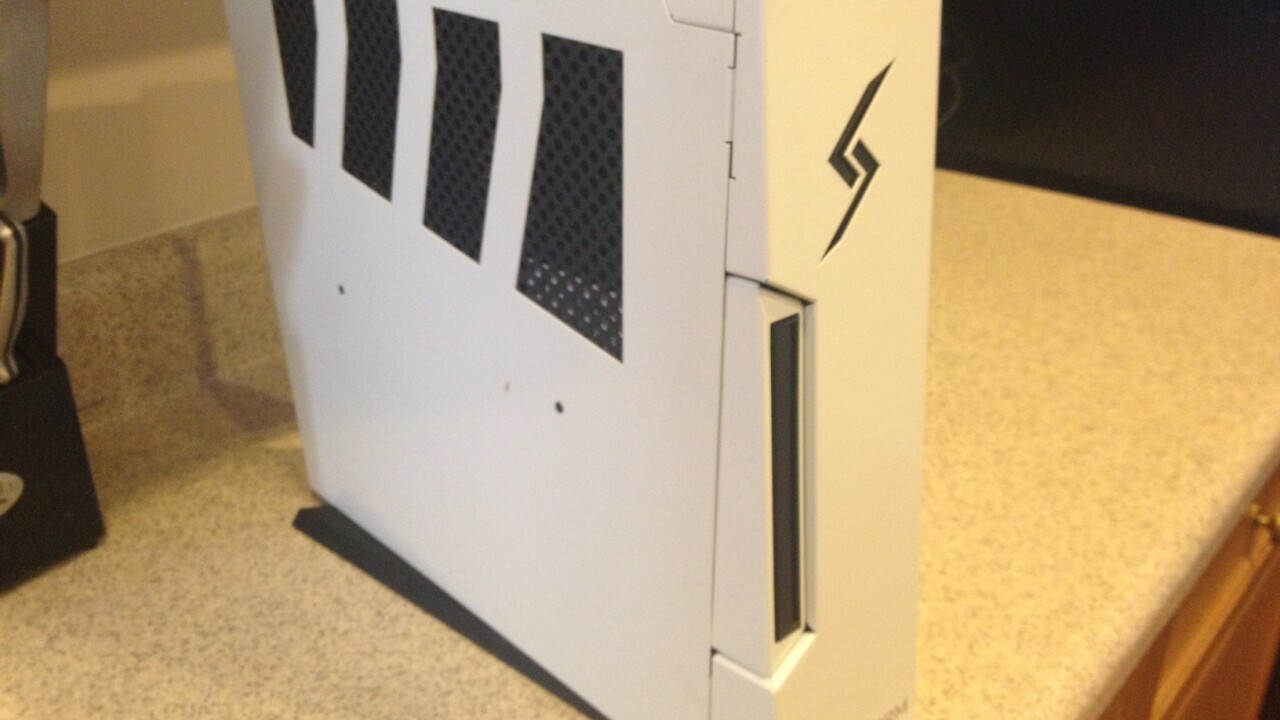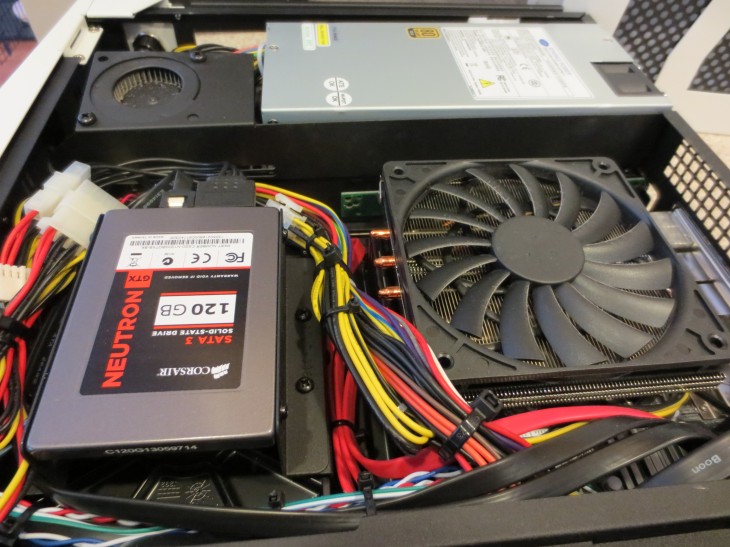
It’s hard to pinpoint exactly when the switch happened, but a few years ago there was a shift in computers that moved away from the massive towers in which you could fit the kitchen sink and more toward sleek, stylish systems that looked every bit at home in your entertainment center as your DVR or Xbox 360. For the past 11 years or so, Digital Storm has been making a name for itself by creating ultra-fast, high-end gaming computers that look every bit as amazing as they perform. Over the past few weeks I’ve been testing the company’s speedy and sleek Bolt system, so it’s time to tell you about what’s next.
The first thing that you need to know about the Bolt is that it’s likely the thinnest, smallest form-factor computer in its class. It’s typically whisper-quiet, but packs a ridiculous amount of power and can run any game that you throw at it. Let’s chat about specs for just a moment, because they’re important this time around:
- Intel Core i7 3770K 3.50 GHz (overclocked to 4.2 GHz)
- 8GB DDR3 1600MHz Corsair Vengeance Series RAM
- 120GB SSD, plus 500 GB, 7200 RPM storage drive
- NVIDIA GeForce GTX 660 Ti 2GB
What’s interesting is that the company uses off-the-shelf components that can readily be switched out for replacements when they become obsolete. Though you shouldn’t have to be concerned about that anytime soon because of the speed of the system out of the box, Moore’s Law is still in place for a reason. The system starts at a street price of $999, but as tested our Bolt will run $1,599.
The difficulty that you’ll face when it comes time to upgrade components is that Digital Storm uses a fully-custom case in order to get everything to fit in the smallest space possible. As such, you’ll be limited in the size of the components that you use to upgrade, so you’ll have to choose carefully. However, because of the attention to detail with the component choices from the company, the end result is a system that is downright sexy, while still managing to be an absolute beast of computing power.

What’s perhaps most impressive about the tiny, 3.6-inch wide case, is what it manages to do for cooling. The Digital Storm team has undoubtedly spent a ridiculous amount of time finding the ideal mixture between passive cooling and airflow fans. With massive vents along the top and sides of the case, the Bolt manages to keep itself well within operating range even while cranking out 60+ frames per second on full pretty mode Bioshock Infinite. Oh, and it does all this without letting the fans get obnoxiously loud. It’s truly a masterpiece of engineering, and the Digital Storm team deserves more than a pat on the back for what it has managed to accomplish.
While gaming performance is absolutely top notch (Maximum PC says it’s the fastest mini-tower that they’ve ever tested), the Bolt is a joy to use as a daily driver as well. I’ve had our review unit running utterly excessive amounts of open applications, while batch-processing in Photoshop and simultaneously encoding movies with Handbrake. When running by itself, Handbrake encoded MKV viles to 1080p, formatted for the Apple TV, at around 130 frames per second. No matter what we threw at the Bolt, it handled the tasks with ease.

While this is neither the time nor place to get into the console versus PC war, it’s worth nothing that many of us just want to play games and use applications where they’re most convenient. As such, having a full computer in the living room is not out of the question, and the Bolt is one that you’ll likely be happy to show off to your guests. A host of USB ports, including two of the USB 3 flavor on the front and two more in the rear, means that you can run keyboards, mice and gamepads to your heart’s content. While it’s perhaps not the traditional form factor that you’d consider for a home theater PC, this lovely, compact marvel of computing power shouldn’t be overlooked.
Facing facts, you can buy the components of the Bolt and built it yourself for less money than what you’ll pay for the system as a whole. But what you won’t get is one that’s this slim, this quiet and backed by Digital Storm’s name. While the hobbyists out there will likely scoff at the price tag of the Bolt, for those of us who want a system that looks great, is lightning fast and stays cool under pressure, you’ll be hard-pressed to find anything that can compare, regardless of price.
Get the TNW newsletter
Get the most important tech news in your inbox each week.





